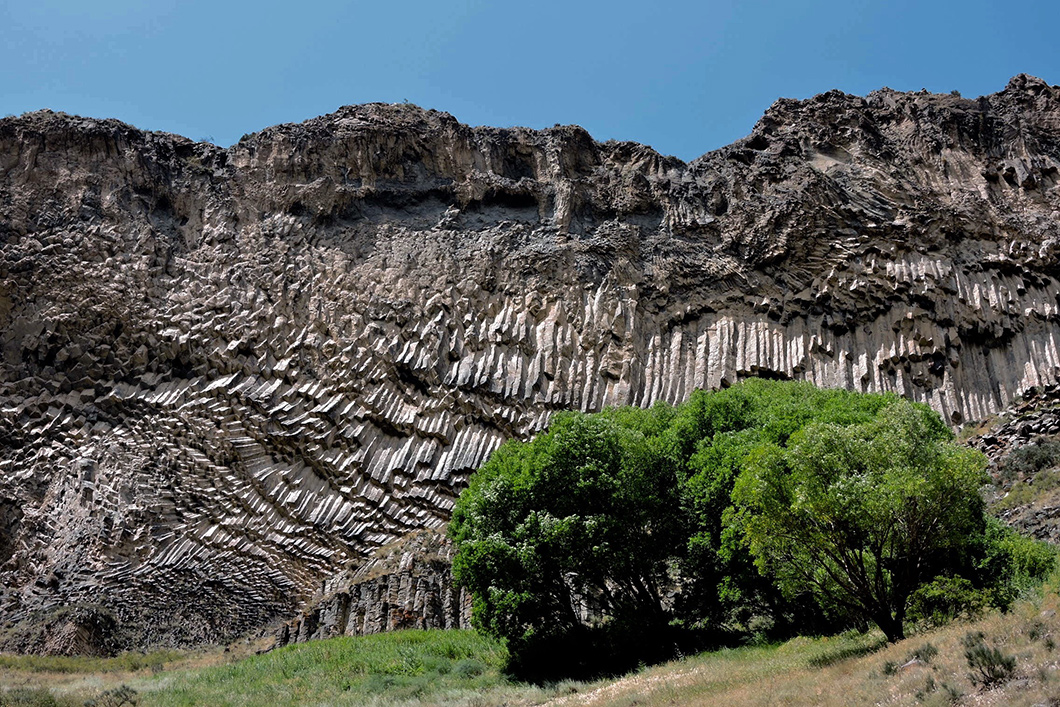“We Are All Armenian”

In 1998, I was fortunate enough to be assigned by the Department of State to the U.S. Embassy in Yerevan, Armenia, as the deputy chief of mission. Thanks to my studies, I was somewhat aware of the important role Armenia played in the history of Europe, Russia, and the Middle East. However, my academic knowledge in no way prepared me for what I discovered.
Early on, I made the acquaintance of Dr. Boris Gasparyan and his scientific colleagues. We began to travel systematically around Armenia, in the hope of building a database of archeological and paleontological sites to lay a foundation for future research.
What we saw on my travels astonished me. We visited historic and prehistoric sites abundant in number, richness, and variety, from medieval cathedrals, fortresses, and towns to Hellenistic cities and Bronze Age tombs. I realized that Armenia is not merely a small country in the Caucasus that regained independence after the collapse of the Soviet Union. It is one of the wellsprings of world civilization, on the same level as Mesopotamia, Egypt, Greece, and Italy.
The traveler in Armenia encounters marvels at every turn through the countryside: hills crowned with Bronze Age fortresses, numberless caves containing early hominid sites, hillsides covered with thousands of ancient stone tools, vast monasteries and ruined cathedrals decorated with delicate bas reliefs.



Our discoveries over the last seventeen years via the Gfoeller Foundation have confirmed and expanded our initial understanding of Armenia’s prodigious role in cultural history. In fact, Armenia is the home of many fundamental arts and technologies that form the core of our civilization. Here we find the earliest form of domesticated wheat, the earliest large-scale wine producing complex yet discovered, some of the earliest centers of metallurgy, the earliest known textile and clothing production, the oldest shoes ever discovered in an archeological excavation, and the earliest known sites related to the domestication of horses.
These arts and technologies developed in ancient Armenia impact the lives of every inhabitant of our planet today. Whoever bakes or eats bread, makes or drinks wine, uses metal tools or jewelry, or wears clothing and shoes is tied by invisible bonds of cultural inheritance to Armenia. In this sense, we are all Armenians.
Early-hominid sites in Armenia, resembling Olduvai Gorge in Kenya and Dimanisi in the Republic of Georgia, indicate that the initial stages of human evolution took place in the Caucasus region, as well as in East Africa. Along with Ethiopia, Armenia is one of the few places in the world where one can trace the pageant of human evolution continuously, from two million BP (before present) to historical times.



Armenia occupies a unique position between East and West. It can be called with equal justification the oldest country in both Europe and the Middle East. The Armenian historical chronicles begin in the twenty-fifth century BCE, many centuries before “Europe” came into existence as a concept. The Armenian capital, Yerevan, was founded in the eighth century BCE as the fortress of Erebuni. The Babylonian Map of the World, dating to the fifth century BCE, contains Armenia. In fact, it is the only country on the map that still exists.
Armenia played a key role in the evolution of world civilization, becoming the first country to adopt Christianity as the state religion in the year 301 AD. Following the collapse of the Western Roman Empire, Armenian scholars preserved and disseminated the knowledge and wisdom of the classical tradition. When literacy nearly died out in Europe, Armenian scholarship flourished in a dense network of monasteries and universities, which welcomed students from all over Europe. In more recent times, Armenian scientists and researchers have made fundamental contributions to human knowledge.
More than a small country on the frontier between Europe and the Near East, Armenia is one of the centers of human evolution. It is one of the richest sources of world civilization. It is the memory of our common origins. It is a symbol of the ability of human culture and dignity to survive the harshest tests of history. It is the common inheritance of humanity.

Ambassador Michael Gfoeller served as a U.S. diplomat from 1984 until his retirement in 2010 in Armenia, Bahrain, Belgium, Iraq, Moldova, Poland, Russia, and Saudi Arabia.

